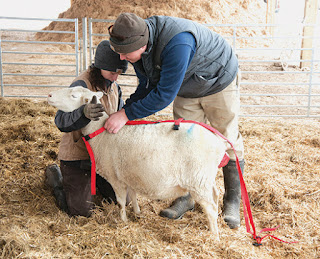That's too bad, as this often causes folks to purchase an energizer that is too small for their fencing needs. How so? The number of miles or acres advertised roughly energizes a single strand conductor, above the ground (no grass contact) with moist soils for that distance—essentially lab conditions.
In comparison—an in use energizer's field conditions involve moist or dry soils, one or many conductors of varying conductivity and grass contact—much more resistance to and drainage of the energizer's pulse.
Points to consider regarding overall fence resistance and pulse strength:
- Poor conductors (high ohms = high resistance) inefficiently carry an energizer's pulse throughout the fence line.
- Multiple conductors increase a fence's overall resistance.
- Grass contact (weed-load) drains energy from a fence.
- Dry soils lack the conductivity to adequately carry an energizer's pulse back to the negative terminal of the energizer.
But how many joules are needed for a specific fence?
The answer is it depends. A rule of thumb some go by is .25 joules per roll of net. Gordon (a Premier Consultant) goes by .5 joules per 3-5 nets (ElectroNet) if you maintain weed-load. That means if you keep the grass short enough (not totally eliminated) you should be able to get 3-5 rolls of 164' net energized (depending on soil conditions).
For more tips on choosing a fence energizer, read this blog-post. It goes over how to use our Energizer Comparison charts.
The miles rating is certainly an effective way to sell energizers but it doesn't say what the voltage will be at the end of that wire—there may be some, but possibly not enough to deter animals.











